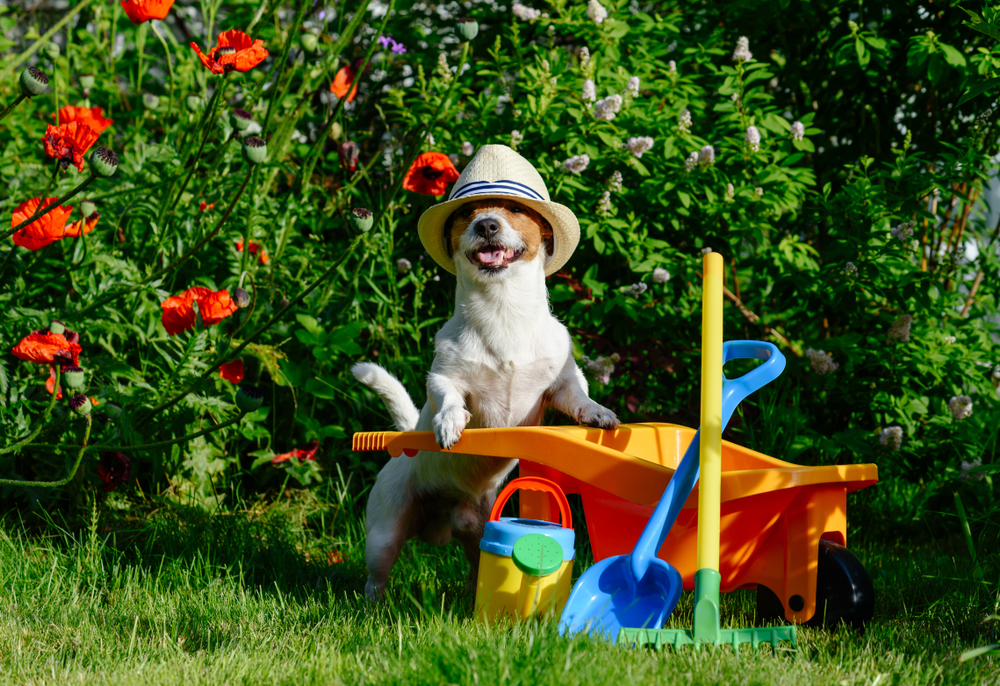Lush, vibrant gardens are a source of joy for many homeowners, but ensuring your outdoor space is safe for everyone in the family, including your beloved pets, is crucial. Creating a pet-friendly garden requires thoughtful planning and attention to their well-being. In this guide, we explore how to nourish your garden in a way that keeps your furry friends happy and healthy.
Choose Pet-friendly Plants
Not all plants are safe for pets as some can be poisonous if ingested. Choose pet-friendly plants such as lavender, sunflowers and pet grass that not only add beauty to your garden but are also non-toxic to animals. Be sure to research plants thoroughly before introducing them to your outdoor space.
Avoid Using Harmful Pesticides and Fertilizers
Conventional pesticides and fertilizers can contain chemicals that are harmful to pets. Choose pet-safe alternatives or explore organic options with the least risk. This not only protects your furry friend, it also helps create a healthier environment.
Create a Special Pet Area
Designate specific areas in the garden where your pet can play and relax. Not only does this help maintain the integrity of your yard, it also provides your pet with a safe place to enjoy the outdoors. Consider adding pet-friendly amenities, such as a small pond where they can cool off or a shaded area with comfortable bedding.
Secure Garden Border
Secure garden boundaries to prevent your pets from straying into potentially dangerous areas. Fences or natural barriers can help confine them to designated areas of the garden, keeping them safe and allowing them to explore in a controlled environment.
Provide Plenty of Shade and Water
Pets, like people, are sensitive to the effects of high temperatures. Make sure your yard has shady areas where your pet can rest during warm weather. Also, always give them fresh water to stay hydrated, especially during the warmer months.
Eliminate Hidden Dangers Regularly
Check your garden regularly for potential hazards, such as sharp objects, small objects that could be swallowed or plants that could become poisonous over time. Eliminating these hazards quickly creates a safer environment for your pet.
Use Natural Pest Control Methods
Maintaining a pet-friendly garden requires a comprehensive approach to pest control. Consider natural alternatives instead of relying on chemical pesticides. For example, companion planting (planting certain plants together to deter pests) can be an effective strategy. Marigolds, for example, are known to repel insects and provide a natural barrier without posing a threat to your pet.
Participate in Pet-friendly Gardening Activities
Include your pet in the gardening experience. Many pets love to dig, and creating designated digging areas can satisfy their natural instincts while protecting the rest of the yard. Additionally, provide a sensory experience for your feline friends by choosing pet-safe herbs like catnip or cat grass and letting them participate in the planting.
Educate yourself about Pet Safety Coverage
Mulching is a common gardening practice, but some mulches can be harmful to pets if ingested. Choose pet-safe mulch alternatives, such as cedar or pine, which are not only safe but also have natural insect repellent properties. This small adjustment can significantly improve the overall safety of your garden.
Invest in Pet-friendly Garden Accessories
Enhance your pet-friendly garden with accessories designed for your furry companions. Consider installing a pet-friendly fountain for them to drink from, or adding pet-friendly stepping stones to create pathways for them to explore. These additions not only serve a practical purpose, but also help improve the aesthetics of your garden.
Encourage Physical Activity
A pet-friendly garden is not just about safety; This is also an opportunity to encourage physical activity in your pet. Design your garden with paths, tunnels, and climbing structures to stimulate your pet’s natural instincts. This not only keeps them physically active but also enriches their minds and contributes to their overall health.
Stay Informed and Adapt
Gardening is a constantly evolving process, and understanding pet-friendly practices is critical. Check regularly for updates on plants, products and gardening techniques that could affect pet safety. Adapting to new information and staying open will ensure that your yard remains a safe and enjoyable place for your pet all season long.
Conclusion
Creating a garden that is both beautiful and safe for your pets requires careful planning, ongoing maintenance and a true love for gardening and your furry companions. By following these tips and continuing to pay attention to your pet’s needs, you can create a sanctuary where your garden and pets can coexist harmoniously, bringing joy and tranquility to your outdoor space.
FAQs
1. Are there specific plants I should avoid in my pet-friendly garden?
Yes, some plants can be poisonous to pets. Avoid plants such as lilies, azaleas and oleanders. Instead, choose pet-friendly options like lavender, sunflower and pet grass.
2. How can I keep my garden pest-free without using harmful chemicals?
Use natural pest control methods, such as pet planting and using pet-safe mulch. Marigolds, for example, repel insects, while pet-safe mulches such as cedar or pine provide safe alternatives.
3. What features should be present in a special animal area in my garden?
Designate an area with pet-friendly amenities, such as a small pond where your pet can cool off, shade for relaxing, and comfortable bedding. This ensures that your pet has a safe, enjoyable space.
4. How do I involve my pet in the gardening experience?
Create a special digging area for pets to satisfy their natural instincts. Choose pet-safe herbs, such as catnip or cat grass, and include them in your plantings to make gardening a shared experience.
5. Are there special pet-friendly accessories for the garden?
Yes, consider investing in pet-friendly accessories such as drinking fountains, pet-friendly stepping stones and climbing structures. These additions enhance the usability and beauty of the garden.



